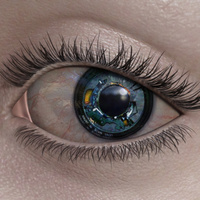Trending searches
betting
purple body
sarah bryant (dead or alive)
elise (dead or alive)
eyeshadow
ezria
ubel (frieren beyond journeys end)
akiza izinski (yu-gi-oh)
vault suit
alisa bosconovitch (tekken)
twilek
sex slave
nipple pinching
against rock
jefferson negus
fiora
being fucked
hercules
aria blaze
overweight female
human
marle (final fantasy)
kitty pryde (x-men)
sephiroth
juno (overwatch)
Top Categories
Back
Amazonium Peak edit
1 month ago
27K (26,995)
0:28
Es increíble éste animador 10/10
Yomai
1 month ago
This girl looks like one of those trans girls with a huge cock. And before some clueless idiot starts talking nonsense, let’s get something straight: futanari has existed for over a thousand years — during the Asuka, Heian, and Edo periods. Historically, males with breasts were already classified as futanari even without a vagina, just like most Western characters today.
I’m a Republican, not an activist. I’m 16 years old and I like biology. There are extreme DSD cases where an individual has a 99% feminine appearance — feminine voice, natural breasts, feminine bone density, and delicate features — and yet is biologically male. Why? Because they have fully functional male genitalia.
So let me make this crystal clear: biologically speaking, anyone who produces male gametes and identifies or believes they are a woman is, by definition, trans — even if they were born with a 99% feminine appearance and, in some rare cases, a vaginal opening...
There’s a lot of misinformation about the term “futanari.” Let’s break it down clearly:
1. Historical origin and meaning:
The word futanari (二形 or 二成り) was born in Japan, but the concept wasn’t. It actually comes from much older ideas originating in China, strongly influenced by yin–yang philosophy and Buddhist texts.
In Chinese medical and religious records, there are descriptions of males with breast development, which were seen as a “mixture of yin and yang.” These ideas predate the term èr gēn (二根) — literally “two roots” — which classified individuals with both male and female sexual traits.
When Buddhism reached Japan, the notion of “dual nature” was absorbed and adapted linguistically into futanari. While the main focus was on individuals with ambiguous or mixed genitalia (what we now call intersex), from the Asuka period and especially during the Heian and Edo periods, futanari became a broad concept, involving not only physiology but also identity, performance, and gender expression.
2. The broad scope of the concept:
Japanese scholars who study this subject acknowledge this historical breadth. Futanari can be imagined as an umbrella term with multiple layers or subcategories, including:
futanari with mixed genitalia (intersex/hermaphrodite)
futanari without vagina (males with breasts and feminine traits)
androgynous futanari
male intersex
classical hermaphrodites
Another crucial point: when talking about modern futanari in Japanese hentai, the overwhelming majority do not display female reproductive function (for example, a functional uterus or the ability to become pregnant). These characters typically have fully male genitalia — penis and testicles — but a female body, which biologically corresponds to male intersex, not to functional hermaphroditism. This clearly shows how modern culture inherited the idea of sexual duality but centered it on the penis rather than full reproductive ambiguity.
3. DSD variations and biology:
People with extreme DSD variations (Differences of Sex Development) also fit into this historical futanari spectrum. In many cases, they present:
natural breasts
female bone density and fat distribution
delicate facial features and a feminine voice
lack of dense body hair
yet possess fully male genitalia
From a chromosomal standpoint, some may have rare variations — for example, La Chapelle syndrome, where an XX individual develops testicles due to SRY gene translocation. Despite their highly feminine appearance, they are biologically classified as male.
Historically, these kinds of bodies and identities were also encompassed by the term futanari in Japan, since they embodied the idea of “two natures,” a fusion of yin and yang, even without ambiguous genitalia.
In summary:
Futanari was never just a fictional concept; its roots are medical, religious, and cultural.
It has always been a broad concept, and yes, males with breasts and feminine appearance were included in it.
The futanari category historically and biologically covers multiple forms of dual sexual traits.
In modern hentai, most futanari characters represent male intersex, since they have male genitalia without female reproductive function.
I’m a Republican, not an activist. I’m 16 years old and I like biology. There are extreme DSD cases where an individual has a 99% feminine appearance — feminine voice, natural breasts, feminine bone density, and delicate features — and yet is biologically male. Why? Because they have fully functional male genitalia.
So let me make this crystal clear: biologically speaking, anyone who produces male gametes and identifies or believes they are a woman is, by definition, trans — even if they were born with a 99% feminine appearance and, in some rare cases, a vaginal opening...
There’s a lot of misinformation about the term “futanari.” Let’s break it down clearly:
1. Historical origin and meaning:
The word futanari (二形 or 二成り) was born in Japan, but the concept wasn’t. It actually comes from much older ideas originating in China, strongly influenced by yin–yang philosophy and Buddhist texts.
In Chinese medical and religious records, there are descriptions of males with breast development, which were seen as a “mixture of yin and yang.” These ideas predate the term èr gēn (二根) — literally “two roots” — which classified individuals with both male and female sexual traits.
When Buddhism reached Japan, the notion of “dual nature” was absorbed and adapted linguistically into futanari. While the main focus was on individuals with ambiguous or mixed genitalia (what we now call intersex), from the Asuka period and especially during the Heian and Edo periods, futanari became a broad concept, involving not only physiology but also identity, performance, and gender expression.
2. The broad scope of the concept:
Japanese scholars who study this subject acknowledge this historical breadth. Futanari can be imagined as an umbrella term with multiple layers or subcategories, including:
futanari with mixed genitalia (intersex/hermaphrodite)
futanari without vagina (males with breasts and feminine traits)
androgynous futanari
male intersex
classical hermaphrodites
Another crucial point: when talking about modern futanari in Japanese hentai, the overwhelming majority do not display female reproductive function (for example, a functional uterus or the ability to become pregnant). These characters typically have fully male genitalia — penis and testicles — but a female body, which biologically corresponds to male intersex, not to functional hermaphroditism. This clearly shows how modern culture inherited the idea of sexual duality but centered it on the penis rather than full reproductive ambiguity.
3. DSD variations and biology:
People with extreme DSD variations (Differences of Sex Development) also fit into this historical futanari spectrum. In many cases, they present:
natural breasts
female bone density and fat distribution
delicate facial features and a feminine voice
lack of dense body hair
yet possess fully male genitalia
From a chromosomal standpoint, some may have rare variations — for example, La Chapelle syndrome, where an XX individual develops testicles due to SRY gene translocation. Despite their highly feminine appearance, they are biologically classified as male.
Historically, these kinds of bodies and identities were also encompassed by the term futanari in Japan, since they embodied the idea of “two natures,” a fusion of yin and yang, even without ambiguous genitalia.
In summary:
Futanari was never just a fictional concept; its roots are medical, religious, and cultural.
It has always been a broad concept, and yes, males with breasts and feminine appearance were included in it.
The futanari category historically and biologically covers multiple forms of dual sexual traits.
In modern hentai, most futanari characters represent male intersex, since they have male genitalia without female reproductive function.
GockSexDemon
1 month ago
Ts belongs in insta vro























Nice chatgpt but no.
You claim that futanari has existed as a real, historical classification for over a thousand years is simply a myth that confuses contemporary hentai terminology with older Japanese words that had ENTIRELY different meanings.
The use of the word futanari (成 or ふたなり) is referring to a woman with both female and male genitalia, male genitalia, or just the rod and the vag. In erotic anime or manga or anything porn related, is a purely fictional and modern fantasy concept, popularized in postwar Japanese pornography, especially from the 1980s onward. Historically, the word did exist in Japan, but it actually meant something completely different. In early Japanese usage during the Heian and Edo periods, futanari meant “dual form” or “androgynous nature”, it was used to describe people, animals, or even spirits perceived as having both masculine and feminine characteristics in a poetic or spiritual sense as Japan especially during these periods were very spirit so it did not refer to literal anatomy combining male and female sex organs, and it was certainly not a social or biological classification lol.
There's also no historical record from the Asuka, Heian, or Edo periods describing “males with breasts” being called futanari in any medical, legal, or cultural document. Pre-modern Japan had concepts of gender fluidity and performers (such as onnagata in kabuki theater) who played female roles, but those traditions had to do with gender performance, not intersex conditions or eroticized depictions of hermaphroditic anatomy. The idea of a “futanari” with a penis and breasts in an erotic context is simply a late 20th-century invention.
The “futanari” concept doesn’t describe trans women or intersex folks at all, it’s an entirely fictional erotic archetype that blends masculine and feminine anatomy for fantasy purposes, not anything real.
For the last part.
Even if they don’t have a vagina or if their anatomy mixes female and male traits or thing like that
In hentai and or porn, futanari characters are consistently portrayed as biological women (female body, female identity, often born female in the story) who happen to have male genitalia, sometimes in addition to female genitalia, sometimes instead of it. They are not depicted as “men who became women” or “trans women” in the real-world sense. Instead, the futa concept is a fantasy of sexual duality, an imagined form of womanhood that possesses both sets of traits for erotic or symbolic purposes.
Even when a futa character is drawn with only a penis and no vagina, the story and world they belong to still treat them as female. They are written, voiced, and identified as women — using female pronouns, having female secondary sex characteristics (like breasts, hips, and voice), and being categorized narratively as “women.” as they are biologically women, not shemale or intersex.
This distinction matters because it shows how futanari isn’t about real-world gender identity or biology. It’s not an attempt to depict trans women, intersex people, or any real human condition. It’s a fictional erotic trope and a creative exaggeration of it all that imagines a woman with additional anatomy for the sake of fantasy.
And that's not even talking the aspect of Sci fi and fantasy, in many cases the futa is what you (person I'm responding to) is an actual woman with a vagina and no male stuff but they either get scientifically altered or magically altered and guess what they are called? Futanari, not anything real your describing.